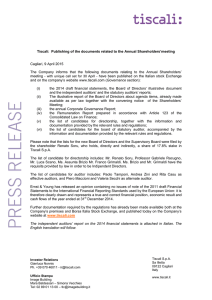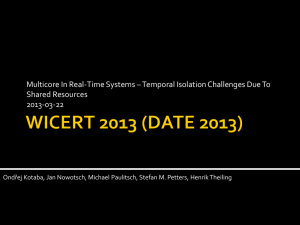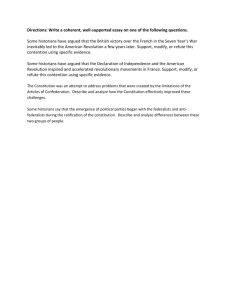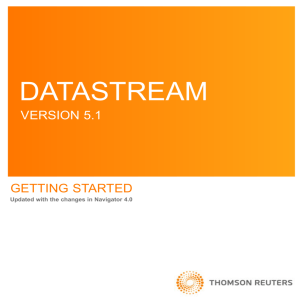DataStream & IPStream
advertisement
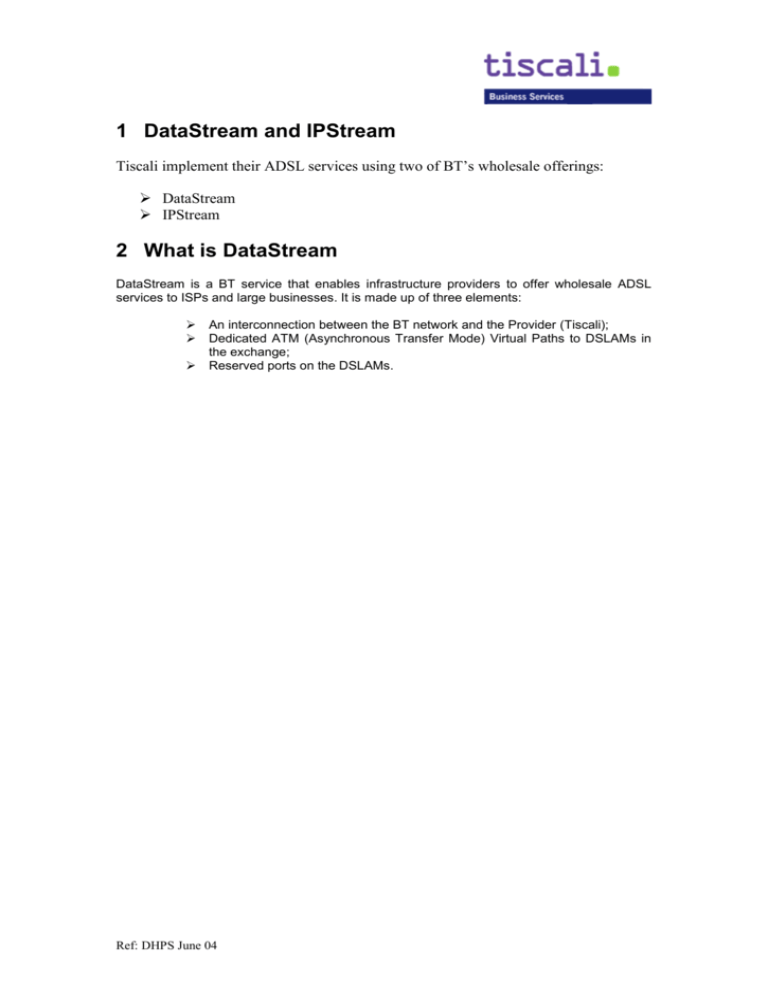
1 DataStream and IPStream Tiscali implement their ADSL services using two of BT’s wholesale offerings: DataStream IPStream 2 What is DataStream DataStream is a BT service that enables infrastructure providers to offer wholesale ADSL services to ISPs and large businesses. It is made up of three elements: An interconnection between the BT network and the Provider (Tiscali); Dedicated ATM (Asynchronous Transfer Mode) Virtual Paths to DSLAMs in the exchange; Reserved ports on the DSLAMs. Ref: DHPS June 04 2.1 Greater Control to you This building block approach allows Tiscali to design its own network, providing for instance dedicated, un-contended bandwidth to each exchange. The services can then be offered to End Customers through one of the reserved ports. The ATM services can be used in a number of ways by infrastructure providers deploying DataStream. Tiscali have opted to provide a range of bandwidths and contention ratios to serve as wide a range of End Customers (and pockets) as possible. In the Tiscali DataStream implementation various points of interconnect have been created between BT and the Tiscali national MPLS (Multi-Protocol Label Switching) network. The traffic can then be carried across this highly resilient backbone to the Internet. Ref: DHPS June 04 3 What’s in the Tiscali “ATM pipe” 3.1 Guaranteed fixed Bandwidth from Tiscali to each Exchange We control the quality by keeping an eye on capacity. We have a number of pipes or Virtual Paths (VPs) to each DataStream enabled exchange. All Virtual Paths used in the Tiscali network are Variable Bit Rate – non real time (VBR-nrt). In theory the bit rate of these can vary. We force these pipes to look and behave like a permanent circuit of guaranteed fixed size. We do this by control of two parameters: The Sustained Cell Rate (SCR) – the minimum cell rate; Peak Cell Rate (PCR) – the maximum cell rate. The Sustained Cell Rate is set equal to the Peak Cell Rate – so the pipes are always the size we have set them to. 3.2 Controlled End Customer bandwidth End Customers are configured with individual Virtual Circuits (VCs) within the Virtual Path. These VCs have the PCR set to the maximum speed of the service (eg. 512 Kbps) and the SCR set to the minimum speed, as defined by the maximum speed and contention ratio (eg. 10 Kbps for a 512 Kbps 50:1 service). By controlling these parameters we are able to offer an almost infinite number of bespoke services. Example of standard 512 Kbps 50:1 service VP size (eg 2Mbps) PCR for a VC (512Kbps) SCR for a VC (10Kbps) The effect of the VC parameters is such that the End Customers can burst to the maximum speed their service allows when bandwidth is available. At times of extreme traffic congestion, the users will obtain a minimum throughput of the SCR level. For the majority of the time, users will be able to burst up to the maximum level, with dips in throughput as congestion occurs. 3.3 DataStream based Service Contention and Speed With DataStream, Tiscali can control the downstream access speed and contention ratio. With the implementation proposed, the SCR of the End Customer provides the mechanism for meeting the contractual levels of the contention ratio. The actual number of End Customers Ref: DHPS June 04 and the size of the VP provide the practical contention ratio level experienced, which is generally a lot better than the contractual committment. Tiscali’s control of the contention ratio allows for bespoke solutions to be developed if required. For example, low contention services of 5:1, 2:1 and even 1:1 are possible. Tiscali achieve this by increasing the SCR level for an individual End Customer. Similarly, access speed can also be adjusted. If a particular application required a maximum speed of, say, 750 Kbps, the PCR is increased accordingly. Example of bespoke 750 Kbps 5:1 service VP size (eg 2Mbps) PCR for a VC (750Kbps) SCR for a VC (150 Kbps) 4 What is IPStream IPStream allows you to buy and ADSL service which has been engineered by BT. It is available in the speeds and contention ratios that BT has pre-selected. 4.1 IPStream based Services contention and Speed For IPStream engineered services, defined products with set contention ratios only are available. These are 50:1 for consumer services and 20:1 for business products. Tiscali and you have no control over these ratios. 5 Upstream Bandwidth On both DataStream and IPStream the maximum upstream throughput, from the End Customer, is 256Kbps. The contention ratio on the upstream is fixed and cannot be engineered to improve performance. Ref: DHPS June 04
